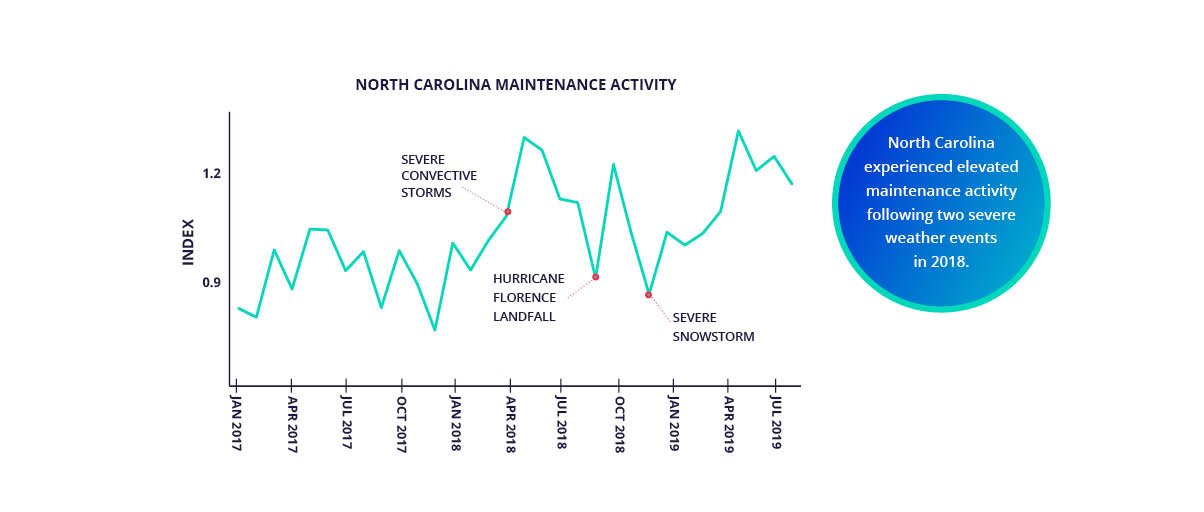September marks the one-year anniversary of Hurricane Florence. Hurricanes and other natural disasters, especially over the past few years, have had a substantial impact on the health of the U.S. housing stock. Natural disasters can tighten the labor construction and materials markets, impact the underlying risk of residential and commercial structures and drive heightened maintenance activity in certain regions of the U.S. The combination of these events is particularly apparent in an analysis of property risk in North Carolina.
Hurricane Dorian Impacts Property Risk in Weather-Worn North Carolina
In September 2019, Hurricane Dorian hit North Carolina’s coastline, wreaking havoc on the Outer Banks and causing severe flooding across the state’s costal properties. Fortunately, it left the region relatively unscathed compared to the damage it caused in the Bahamas or even compared to the damage North Carolina experienced from 2018’s Hurricane Florence.
However, even though Dorian made far less of an impact than Florence, it encountered the region in a very different condition than it was a year prior. Property risk in North Carolina is still high not only from Hurricane Florence, but also from the severe convective storms and snowstorms that impacted the state in the latter half of 2018. While these storms don’t bring about the headlines that a tropical storm does, they have the potential to inflict serious damage on properties. Repeat weather events combined with tightening construction materials and labor markets and a slowing housing market have resulted in slow recovery across North Carolina.

Spotlight: 2018 Maintenance Activity Rises in North Carolina
- April 2018, Convective Storms: Five months before Hurricane Florence made landfall in North Carolina, the state experienced severe spring convective storms, which ultimately necessitated a major disaster declaration from the Federal Emergency Management Association (FEMA). Following April’s storm and tornado activity, BuildFax research found maintenance activity in North Carolina rose 20.32% month over month.
- September 2018, Hurricane Florence: Maintenance activity remained heightened through the rest of the summer as homeowners worked to repair properties damaged by spring convective storms. However, in the wake of these updates, Hurricane Florence hit, driving maintenance even higher. Maintenance activity rose 34.84% between September and October 2018 following Hurricane Florence.
- December 2018, Severe Snowstorms: more than a foot of snow blanketed the state, stalling maintenance activity, causing thousands of power outages and leading to increased property risk in North Carolina. As of August 2019, one year after Florence made landfall, maintenance levels are 17.84% higher than they were on average in 2017 and 2018.
Homeowners Repair Properties Amidst a Rapidly Transforming Housing Market
At face value, properties in the path of Hurricane Florence were expected to see major repairs completed in seven to eight months, given the severity of the storm. However, the elevated severe weather has curtailed recovery progress.
In addition to increased property risk in North Carolina from weather-related events, tariffs and natural disasters across the country have tightened the construction materials and labor markets, making the cost of these repairs increase substantially. Amidst these external stressors, carriers are working to ensure the risk on their books in North Carolina and the surrounding states is accurate.
For more information on the state of housing activity across the U.S., download our August Housing Health Report.